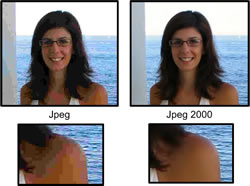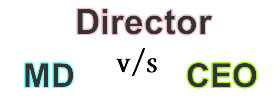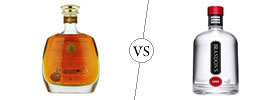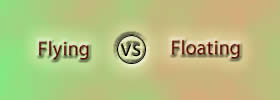Difference between JPEG and JPEG2000
Key difference: JPEG stands for Joint Photographic Expert Group. The file name for a JPEG image is .jpg or .jpeg. JPEG is the most commonly used format for photographs. JPEG2000 is another format from the Joint Photographic Expert Group. It was released in the year 2000. It was the group’s attempt to upgrade the JPEG format. The newer, JPEG 2000 would update the JPEG standard to 16-bit, from the original 8-bit standard.
 JPEG stands for Joint Photographic Expert Group. The file name for a JPEG image is .jpg or .jpeg. JPEG is the most commonly used format for photographs. It is specifically good for color photographs or for images with many blends or gradients. However, it is not the best with sharp edges and might lead to a little blurring. This is mainly because JPEG is a method of lossy compression for digital photography.
JPEG stands for Joint Photographic Expert Group. The file name for a JPEG image is .jpg or .jpeg. JPEG is the most commonly used format for photographs. It is specifically good for color photographs or for images with many blends or gradients. However, it is not the best with sharp edges and might lead to a little blurring. This is mainly because JPEG is a method of lossy compression for digital photography.
This means that while saving the image in a JPEG format, there is a slight loss of quality due to compression. Hence, JPEG is not the greatest format in case one needs to keep making numerous edits and re-saves to the image. As with each re-save there a slight loss of quality due to compression. Still, if one only makes a few edits and the image is saved in a high quality format, the slight loss of quality due to compression is mainly negligible. An advantage to using the JPEG format is that due to compression, a JPEG image will take up a few MB of data.
Due to the popularity of JPG, it is also accepted in most if not in all programs. It is quite popular for web hosting of images, for amateur and average photographers, digital cameras, etc. This is mainly due to the fact that high quality images can be saved using less space.
JPEG2000 is another format from the Joint Photographic Expert Group. It was released in the year 2000. It was the group’s attempt to upgrade the JPEG format. The newer, JPEG 2000 would update the JPEG standard to 16-bit, from the original 8-bit standard. The newer format was based on newly designed, wavelet-based method. The filename for the JPEG 2000 files is “.jp2 for ISO/IEC 15444-1 conforming files and .jpx for the extended part-2 specifications, published as ISO/IEC 15444-2.”
JPEG.org, the official website of the Joint Photographic Expert Group, lists the following features as part of the JPEG2000:
- Better efficiency in compression
- Possibility of lossless compression
- Decoding with different output resolutions
- A process to calculate the integrated bit rate (possibility of reaching an aimed bit rate)
- Dividing the image into smaller parts to be coded independently from the others
- ROI coding
- Improvement in noise resilience
- Access to the compressed bit rate at any point in order to access the image directly
- Better performances in coding/decoding through many different cycles
- More flexible file format

As compared to the JPEG format, the JPEG2000 provides resources for both lossy and lossless compression. Hence, JPEG2000 has a slight edge over JPEG, as JPEG2000 image would retain much more detail than a JPEG image compressed to the same size.
However, JPEG2000 is not backward compatible. This means that it is not able to read JPEG files. As most of the images today are in JPEG, this poses a problem.
Furthermore, the wavelet technology, on which the JPEG2000 is based, is much more complex than the code used for JPEG images, which means that reading and writing of JPEG2000 images will take longer. It will also require more complex software and more memory to run the complex software on. Hence, working with JPEG2000 images generally takes longer than working with JPEG images.
Due to all of these reasons, JPEG2000 still hasn’t been able to usurp JPEG’s seat as the preferred and most commonly used image format. This is despite that fact that JPEG2000 is the newer and more improved technology of the two.
Image Courtesy: magnetar-spb.ru, commons.wikimedia.org









Add new comment